Key takeaways
- Shadow photography focuses on the interplay of light and darkness, enhancing depth and storytelling in images.
- Essential gear includes a sturdy tripod, polarizing filter, and remote shutter release to achieve sharp and compelling shadow shots.
- Planning and scouting locations in advance, alongside understanding light patterns, are crucial for capturing effective shadows in canyon landscapes.
- Editing techniques such as careful contrast adjustment and selective editing can reveal subtle details in shadows without compromising their mystery.
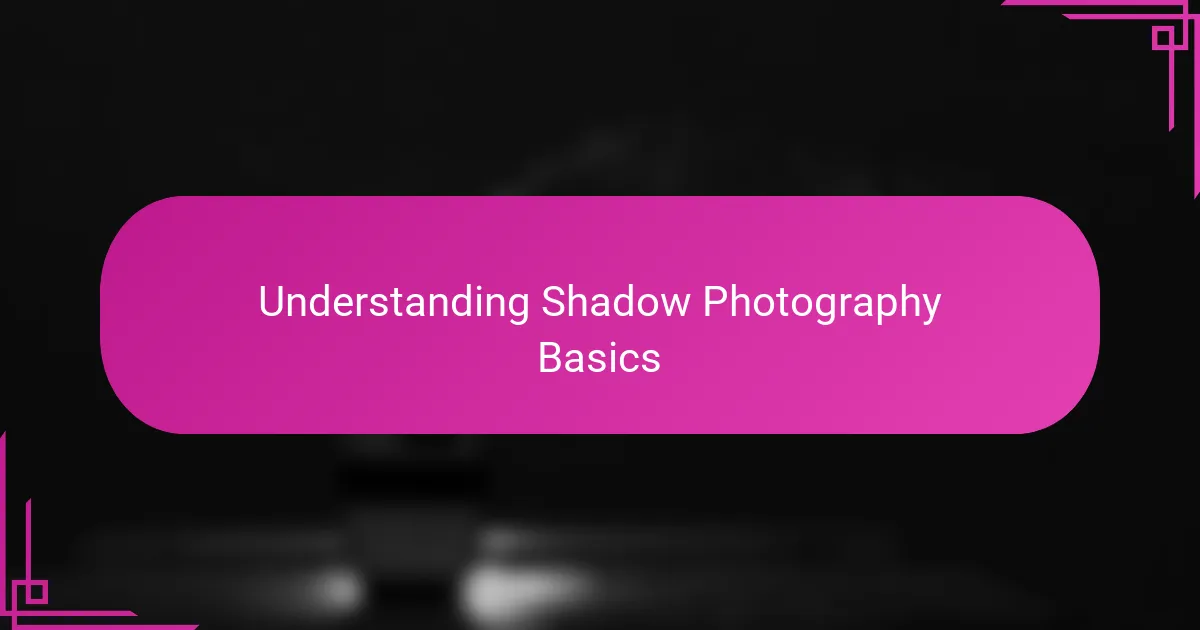
Understanding Shadow Photography Basics
Shadow photography, at its core, is about capturing the dance between light and darkness. I’ve always found it fascinating how shadows can tell stories without words, adding depth and mystery to a scene. Don’t you think shadows often reveal more than the objects casting them?
One key thing I’ve learned is that understanding the direction and quality of light is essential. Early mornings and late afternoons create long, soft shadows that bring out textures in ways midday sun just can’t. Have you ever noticed how the Grand Canyon’s shadows shift so dramatically throughout the day?
Finally, experimenting with angles changed everything for me. Instead of just shooting the landscape, I started focusing on the shapes shadows created, turning simple rocks and cliffs into abstract compositions. It made me realize shadow photography is as much about seeing differently as it is about technical skill.
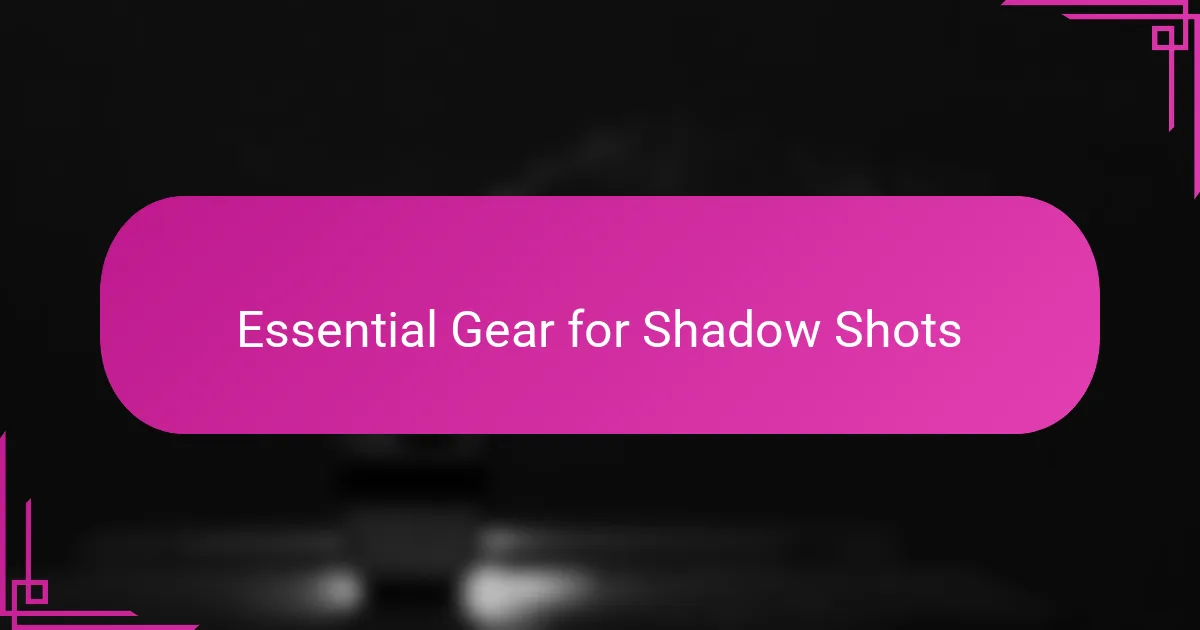
Essential Gear for Shadow Shots
When I first set out to capture shadow shots in the Grand Canyon, my camera was my trusty companion, but I quickly realized that a sturdy tripod was just as crucial. Shadows often require slower shutter speeds to get the perfect contrast without losing detail, and hand-holding the camera simply can’t deliver the sharpness I wanted. Have you ever tried balancing on a rocky ledge while fiddling with settings? A solid tripod saved me from more than one close call.
Another piece of gear that made a huge difference was a polarizing filter. I didn’t expect it to help with shadows, but it actually deepened the contrast between light and dark areas, making the shadows pop against the vibrant canyon walls. It’s amazing how a simple filter can transform what your eyes see into something far more dramatic through the lens.
Lastly, I always carried a remote shutter release or used the camera’s timer function. This might sound trivial, but minimizing camera shake was vital for those crisp shadow lines. Once, while trying to catch the perfect shadow just before sunset, I realized that even the tiniest movement blurred the image — that’s when I truly appreciated how this small gadget contributed to sharp, striking shadow shots. Have you experienced the frustration of blurry photos when lighting conditions are already challenging? This little tool can be a real game-changer.
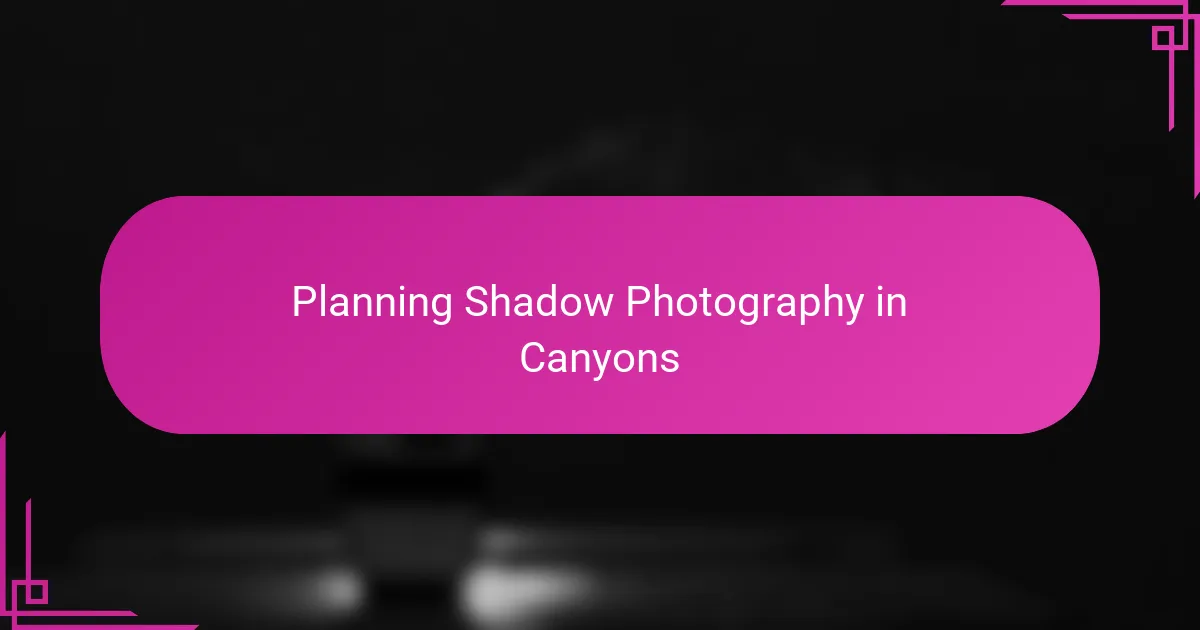
Planning Shadow Photography in Canyons
Planning shadow photography in canyons starts with understanding the canyon’s terrain and how the sunlight travels through it. I found that studying topographic maps and sunrise-sunset charts helped me predict where shadows would stretch and fall. Have you ever tracked the sun’s path with such detail? It really changes how you approach each shot.
Timing was another crucial factor I couldn’t overlook. The Grand Canyon’s immense depth means shadows shift dramatically within minutes, so I made sure to arrive early and stay late to catch these fleeting moments. Waiting patiently on a cliff edge as the light changed was both nerve-wracking and thrilling, reminding me why planning patience is part of the process.
Scouting locations ahead of time also became a personal ritual. I’d explore lesser-known spots to find unique shadow patterns, rather than sticking to popular viewpoints. This gave me a sense of discovery and made the shadows I captured feel more intimate, almost like secret stories whispered just for my camera. Have you tried going off the beaten path to spot shadows others might miss?
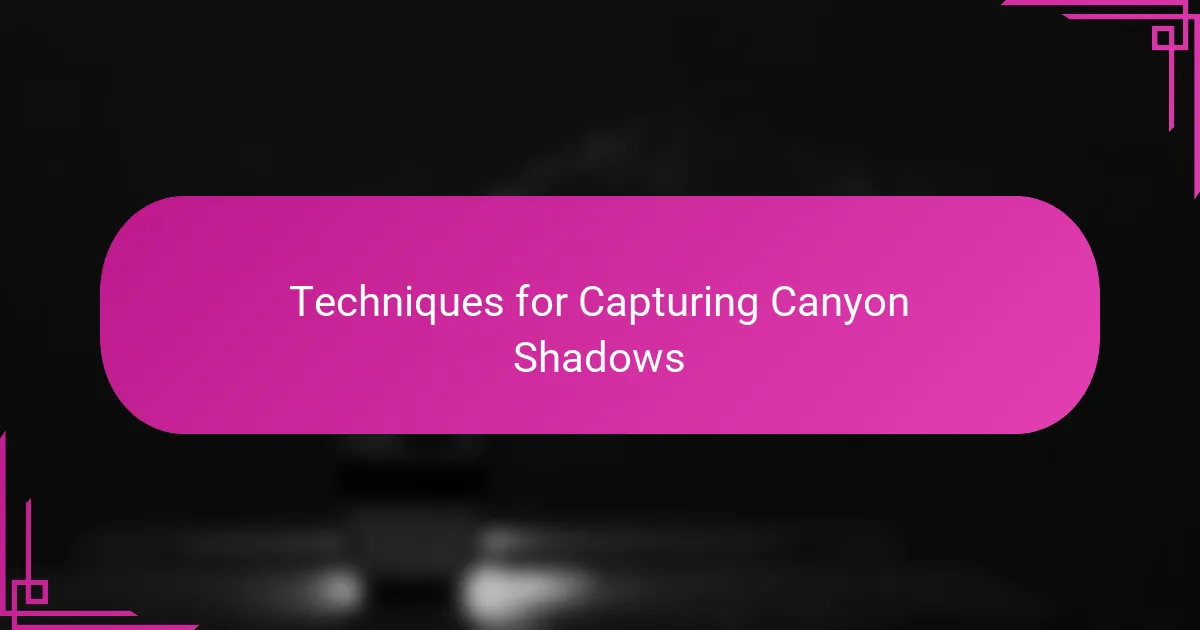
Techniques for Capturing Canyon Shadows
One technique that transformed my shadow shots was bracketing exposures. Shadows in the canyon can be so deep that a single exposure either blows out the highlights or muddies the darks. Have you ever struggled with balancing those extremes? By capturing multiple exposures and blending them later, I could preserve the richness in both light and shadow, revealing details that my eyes sometimes missed.
Focusing became another game-changer. Instead of relying solely on autofocus, I switched to manual focus to precisely lock onto edges where shadows met light. This helped me capture sharper contrasts and the intricate textures carved into the canyon walls. It felt like coaxing the scene’s hidden stories into clarity, wouldn’t you agree that sometimes slowing down enhances your vision?
Lastly, using wide-angle lenses gave me the ability to frame expansive shadow patterns stretching across the canyon floor, while a telephoto came in handy for isolating tiny shadow fragments sculpting the rocks. Experimenting with these focal lengths taught me that shadows aren’t just background elements—they’re the main characters of the canyon’s visual drama. How often do you find yourself changing lenses to follow the light’s narrative?

Personal Experiences in Grand Canyon Shadows
Standing at the rim of the Grand Canyon, I was awestruck by how the shadows played tricks on my perception. One afternoon, as the sun dipped lower, I watched a shadow slowly creep along a jagged rock face, transforming it from a familiar shape into something almost mythical. Have you ever had a moment where light and shadow made the landscape feel alive in a completely unexpected way?
I remember feeling a profound sense of solitude while tracking the long, stretching shadows during a quiet sunrise. The cool air, the stillness, and those shifting silhouettes gave me a strange kind of companionship — like the canyon was sharing a secret just with me. That intimate connection made every photograph I took feel much more personal than any snap shot I’d ever captured before.
Sometimes, shadows revealed textures and details that escaped casual observation. One day, while crouched near a crevice, I noticed how the interplay between light and shade exposed every crack and crevice, painting a complex mosaic of the rock’s history. Isn’t it fascinating how shadows can add such depth and emotion to something as ancient as these canyon walls?
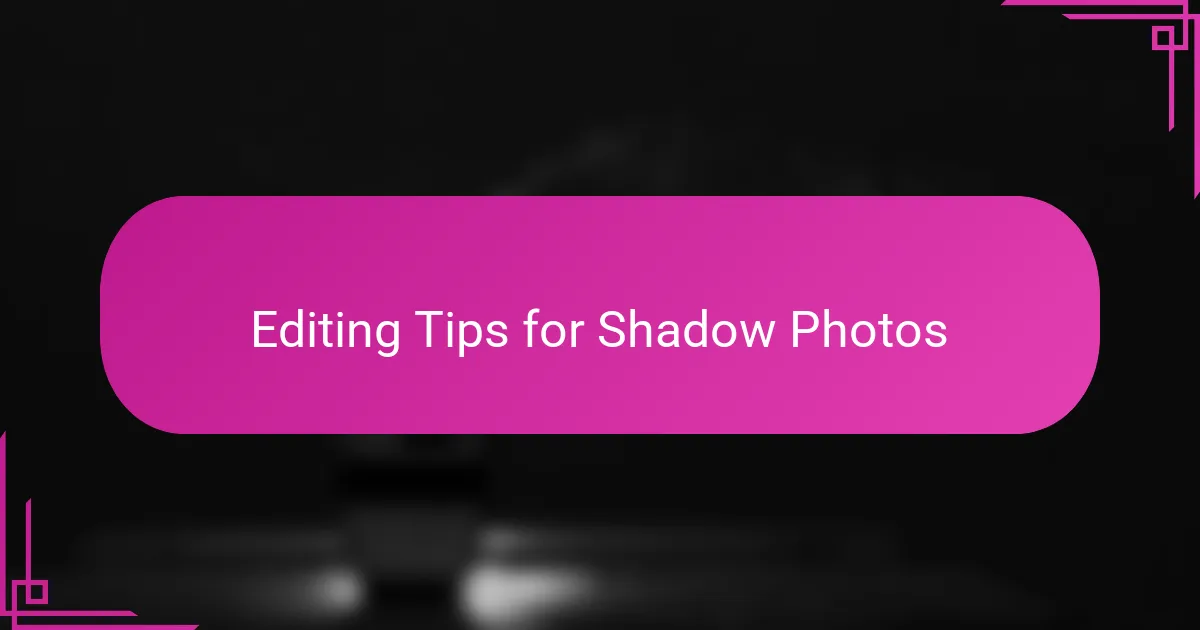
Editing Tips for Shadow Photos
Editing shadow photos taught me to tread carefully with contrast and exposure. Shadows can easily become too dark, losing their subtle details, or highlights can get blown out if I’m not careful. Have you ever edited a photo and felt like the shadows just swallowed all the nuance? I find gently adjusting shadows and highlights sliders helps retain that delicate balance without making the image look unnatural.
Sometimes, I use selective editing tools like brush masks to brighten shadow areas just enough to reveal texture, without flattening the mood. This approach feels like coaxing out secrets hidden in the darkness, bringing the story to life without losing the mystery. It’s almost a conversation with the photo—what do you want to show, and what should remain elusive?
Another tip I swear by is sharpening shadow edges carefully. Overdoing it can create harsh lines that ruin the natural feel, but subtle clarity boosts make shadows more defined and dramatic. It’s amazing how small tweaks can enhance the impact of shadows, making them feel as alive and compelling as the canyon itself. Have you tried playing with clarity or sharpening on shadows to see what unfolds?
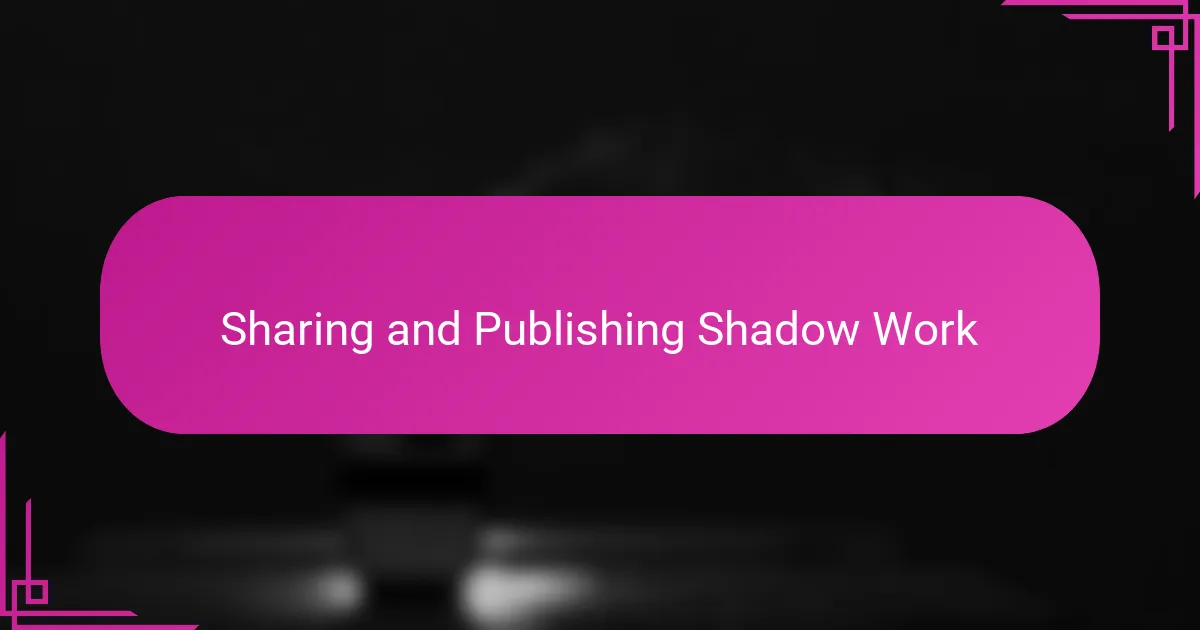
Sharing and Publishing Shadow Work
Sharing my shadow work has been a revealing experience. When I first posted my Grand Canyon shots online, I wondered if others would appreciate the subtle stories shadows tell. Surprisingly, the feedback showed me that many people connect deeply with these quiet moments of light and dark—sometimes more so than with vivid color images.
Publishing shadow photos requires careful curation, in my opinion. I avoid flooding galleries with every shot and instead select images that evoke emotion or highlight unique interplay of shadow and landscape. Have you ever felt that one photo captures a mood so perfectly it deserves to stand alone? That’s the feeling I aim for when sharing my work.
I’ve also found that describing the context behind each shadow photo enriches the viewer’s experience. Writing about the exact moment the light shifted or the patience it took to wait for a perfect shadow adds layers of meaning. Isn’t it amazing how a simple caption can transform a visual into a shared story?